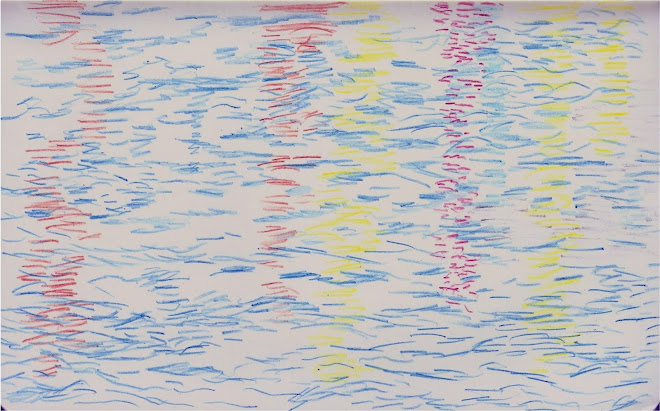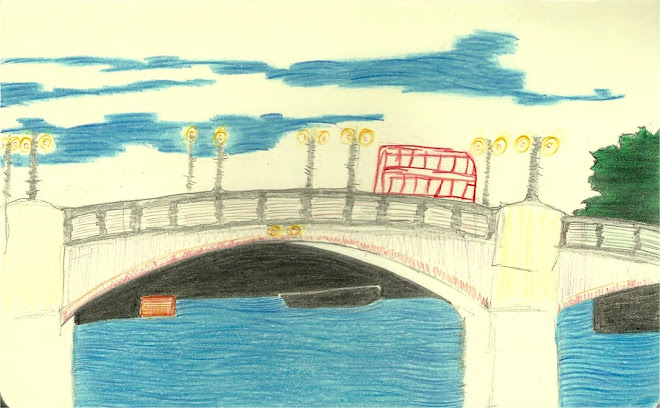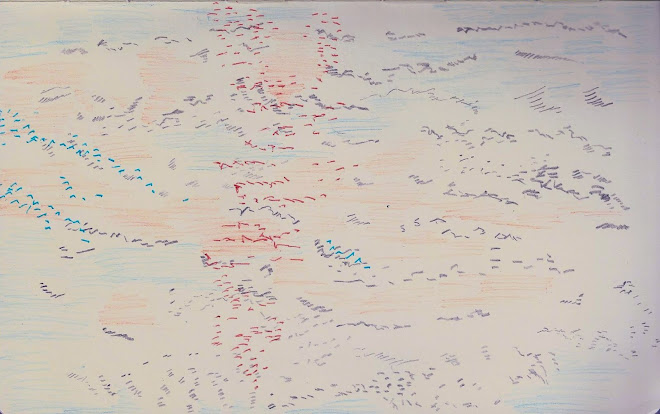As usual, the Museum was busy and the Stone, when I arrived, was obscured by a large crowd. Apparently it's the most popular exhibit. Its early existence was also illustrious, a piece of a stela carved in 196 BC as a part of coronation ceremonies for the boy king Ptolemy V. It records a tax exemption granted by Ptolemy V to priests - written in 3 languages: hieroglyphics, understood by the priests, demotic, the language of the Egyptians at that time, and Greek.
The broken Stone, in its current form, was found during Napoleon's campaign in Egypt in July 1799 - in Rashid on the west bank of the Nile, where it had been used as material to build a fort. The Stone was taken to Europe where study of the 3 languages enabled translation of hieroglyphics.
One of the surprising things about Indonesia, to a westerner, is the number of scripts, apparently derived from Sanskrit, Arabic and Malay. In the National Museum in Jakarta, numerous stones record these scripts. Water was poured from the carved serpent heads at the top of one such massive stone, over a curse engraved on its face, and collected in a drinking vessel under its carved spout. The curse, devised by a king, meant that whoever drank the water, if disloyal, would suffer terrible consequences.
These days, the water of the Thames is less malign. I went down to Canary Wharf to make a drawing.
Tuesday, 25 January 2011
Tuesday, 18 January 2011
A visit to the Design Museum
From London Bridge Station I passed the business district south of the Thames, then warehouses converted to shops, but still with the feel of 'warehouse': mysterious fragrance, commodities in bales. In the distance I could see the sign for the Design Museum.
The Jakarta Maritime Museum (Museum Bahari) is housed in warehouses where the Ciliwung enters Sunda Kelapa Harbour. Dating from 1652, these buildings stored pepper, tea, coffee and cloth for the Dutch East India Company. Today they display watercraft - traditional and modern, European and local - that navigated Indonesia. The diversity in designs for ships and boats is surprising. But, no doubt, each vessel was adapted for its circumstances.
The day I visited Museum Bahari, in the broad alley between the warehouses, a wedding party greeted guests. The warehouses were dim, massive stone and timber constructions. The wedding party was a shimmer of colour, light glanced from tapestry and lace, traditional garments and modern high heels.
In the Design Museum in London there was an exhibition of fashion drawings. For the ships and boats of Indonesia, the design question was fitness for purpose. For garments in London the issue was perception: sophistication. These are two distinct reasons for design.
Outside the afternoon was chilly. I made a drawing near Tower Bridge, and went home.
The Jakarta Maritime Museum (Museum Bahari) is housed in warehouses where the Ciliwung enters Sunda Kelapa Harbour. Dating from 1652, these buildings stored pepper, tea, coffee and cloth for the Dutch East India Company. Today they display watercraft - traditional and modern, European and local - that navigated Indonesia. The diversity in designs for ships and boats is surprising. But, no doubt, each vessel was adapted for its circumstances.
The day I visited Museum Bahari, in the broad alley between the warehouses, a wedding party greeted guests. The warehouses were dim, massive stone and timber constructions. The wedding party was a shimmer of colour, light glanced from tapestry and lace, traditional garments and modern high heels.
In the Design Museum in London there was an exhibition of fashion drawings. For the ships and boats of Indonesia, the design question was fitness for purpose. For garments in London the issue was perception: sophistication. These are two distinct reasons for design.
Outside the afternoon was chilly. I made a drawing near Tower Bridge, and went home.
Sunday, 9 January 2011
The Tate Modern Gallery again...
I went to see Ai Weiwei's 'Sunflower Seeds' sculpture - 100 million hand-made slightly-larger-than-life glazed ceramic seeds spread across an expanse of floor - a field of undifferentiated grey in the distance shading to striped particles, light and dark, up close.
Conceptual art, the work reflects on propaganda and on small acts of humanity during the Cultural Revolution, as people shared sunflower seeds, and as people themselves were depicted as sunflowers turning to Mao, the sun.
The work also reflects on the modern-day 'Made in China' tag. The artist worked with craftspeople in Jingdezhen, famous for its porcelain, drawing on their traditional skills.
Traditional skills are widely-practised in Indonesia: stone-carving, wood-carving, puppet-making, batik-making. In the traditional workshops of Cirebon, women patiently heat wax resist and apply it in canting ('chanting') to silk, sitting in stillness, like Vermeer paintings. Fine work is made to order, from the international market.
Outside, the days are longer. This was a beautifully sunny day, if icy cold - it must be snowing somewhere. I made this drawing near the Millennium Bridge then hurried home.
Conceptual art, the work reflects on propaganda and on small acts of humanity during the Cultural Revolution, as people shared sunflower seeds, and as people themselves were depicted as sunflowers turning to Mao, the sun.
The work also reflects on the modern-day 'Made in China' tag. The artist worked with craftspeople in Jingdezhen, famous for its porcelain, drawing on their traditional skills.
Traditional skills are widely-practised in Indonesia: stone-carving, wood-carving, puppet-making, batik-making. In the traditional workshops of Cirebon, women patiently heat wax resist and apply it in canting ('chanting') to silk, sitting in stillness, like Vermeer paintings. Fine work is made to order, from the international market.
Outside, the days are longer. This was a beautifully sunny day, if icy cold - it must be snowing somewhere. I made this drawing near the Millennium Bridge then hurried home.
Tuesday, 4 January 2011
It was time to spend time in Greenwich...
It was an icy day, and the DLR line was under repair, but the decision had been made and the visit went ahead. The driver of the substitute bus was delightful, if somewhat uncertain about the route.
When we finally arrived, I wandered around the hospital for veteran sailors (later the Royal Naval College). There were memorials to heros. In 1806, on the upper level of the Painted Hall, the body of Horatio, Lord Nelson lay in state, following the battle of Trafalgar. Closer to the river, a statue marked Sir Walter Raleigh, 200 years earlier.
In Jakarta are many memorials to heros. One National Hero, Diponegoro, is depicted as strong-willed and flamboyant. A Javan prince from Yogyakarta, he led guerilla warfare against Dutch colonials from 1825 to 1930, until he was captured and exiled to Sulawesi (the Celebes). His name lives on in history books, statues, in the title of a Semarang university and in the current title of the Central Java military region.
Wanting to head to the National Gallery, behind Nelson's Column and Trafalgar Square, I didn't have time for the vagaries of delightful bus drivers. I took the launch and made a drawing on the way.
When we finally arrived, I wandered around the hospital for veteran sailors (later the Royal Naval College). There were memorials to heros. In 1806, on the upper level of the Painted Hall, the body of Horatio, Lord Nelson lay in state, following the battle of Trafalgar. Closer to the river, a statue marked Sir Walter Raleigh, 200 years earlier.
In Jakarta are many memorials to heros. One National Hero, Diponegoro, is depicted as strong-willed and flamboyant. A Javan prince from Yogyakarta, he led guerilla warfare against Dutch colonials from 1825 to 1930, until he was captured and exiled to Sulawesi (the Celebes). His name lives on in history books, statues, in the title of a Semarang university and in the current title of the Central Java military region.
Wanting to head to the National Gallery, behind Nelson's Column and Trafalgar Square, I didn't have time for the vagaries of delightful bus drivers. I took the launch and made a drawing on the way.
Subscribe to:
Posts (Atom)











































